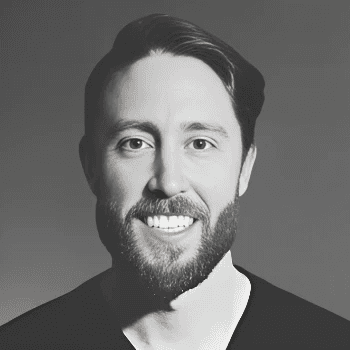Ben Doctor
Imagine you’re about to knock over a line of dominoes. You spend hours analyzing the trajectory of the last domino, calculating the speed at which it will fall and how it will land. But there’s one small issue: you haven’t set up the first domino yet.
This is how many of us approach work, projects, and decision-making. We skip over the essential first step—the thing that sets everything in motion—and obsess over optimizing what happens later. It feels smart. It feels like we’re preparing for success. But in reality, we’re solving a problem that doesn’t exist yet.
This isn’t just inefficient. It’s demoralizing. When we focus on what might happen down the line instead of what matters right now, we end up with perfect systems that don’t solve real problems—or worse, nothing at all.
The danger of skipping the first step
Years ago, I sat in on a marketing class where the professor presented a case study about ad placement. He asked students to imagine they were running multiple ads—on billboards, menus, taxi cabs—and tasked them with figuring out which one was driving the most leads.
The students eagerly jumped into the challenge, proposing attribution models and metrics to measure effectiveness. But no one stopped to ask whether the ads were any good. It was taken for granted that the creative work was done, and the real challenge was the analysis.
Here’s the problem: If the ad doesn’t resonate, no amount of analysis will help. You could have the best attribution model in the world, but it would only confirm one thing: failure. The students were skipping the first domino. Instead of solving the fundamental problem—creating an ad that works—they were busy optimizing for outcomes that hadn’t happened yet.
This is how so many projects fail. Not because the strategy was bad or the tools were wrong, but because the real work never got done.
Why we default to downstream thinking
If focusing on the first step is so obvious, why do we so often ignore it?
Part of the answer lies in psychology. Humans are naturally wired to seek certainty. When we focus on downstream problems—like scaling, measuring, or optimizing—we feel like we’re in control. We’re tackling tangible challenges, even if those challenges aren’t the most pressing ones.
But there’s another, deeper reason: We’re afraid of the messy work that comes with creating something new. Designing an ad, launching a product, or writing a first draft forces us to confront uncertainty. What if it doesn’t work? What if it’s not good enough? It’s easier to avoid that discomfort by diving into analysis, planning, and preparation.
How to focus on the right problem
The solution is simple, but not easy: Focus on what matters most right now, even if it’s uncomfortable. Here’s how:
1. Define the real problem. Before you do anything else, ask: “What’s the one thing that has to work for this to succeed?” Often, it’s not the metrics or the systems. It’s the idea, the execution, the creative spark. Focus there.
2. Push something live. There’s no substitute for real-world feedback. Instead of waiting until everything is perfect, launch something imperfect and learn from the response. If it fails, at least you’re failing forward.
3. Let problems emerge before solving them. It’s tempting to plan for every possible scenario, but that’s rarely the best use of time. Instead, solve problems as they arise. Let success create new challenges, and tackle them when they’re real, not hypothetical.
4. Reframe failure as learning. The fear of failing often drives us to focus on the wrong problems. But failure is only final if you stop moving. When you treat every failure as a step toward understanding what works, the stakes feel lower—and the work gets better.
The domino effect of good focus
When you focus on the first domino—whether it’s an ad, a product, or an idea—you create momentum. And momentum matters more than perfection. A good first step sets off a chain reaction, where each subsequent step becomes easier and more natural.
But when you skip the first step and jump to solving downstream problems, you create friction. Instead of building something tangible, you end up with plans, projections, and analyses that don’t amount to much. You’re busy, but you’re not moving.
The beauty of focusing on the right problem is that it doesn’t just lead to better outcomes—it also leads to better work. You stop spinning your wheels and start making progress. You stop chasing certainty and start embracing the uncertainty that fuels creativity.
So, before you set up your next big project, ask yourself: What’s the first domino? And are you ready to knock it over?
Ben Doctor is the founder of Canvas of Colors, where he helps teams cut through the noise and focus on building great products that matter. With a background in executive roles across user experience, product strategy, and user research, Ben has spent his career simplifying complex challenges and empowering teams to focus on what really matters—creating impact through great user experiences. He's passionate about stripping away unnecessary processes so teams can do their best work with clarity and confidence.
Delightfully infrequent, but intentional—stay sharp with straightforward guides, new ideas, updates, and community stories that matter. 📥
Made with ❤️ in San Diego, CA
Copyright © 2024 Canvas of Colors LLC. All rights reserved.
